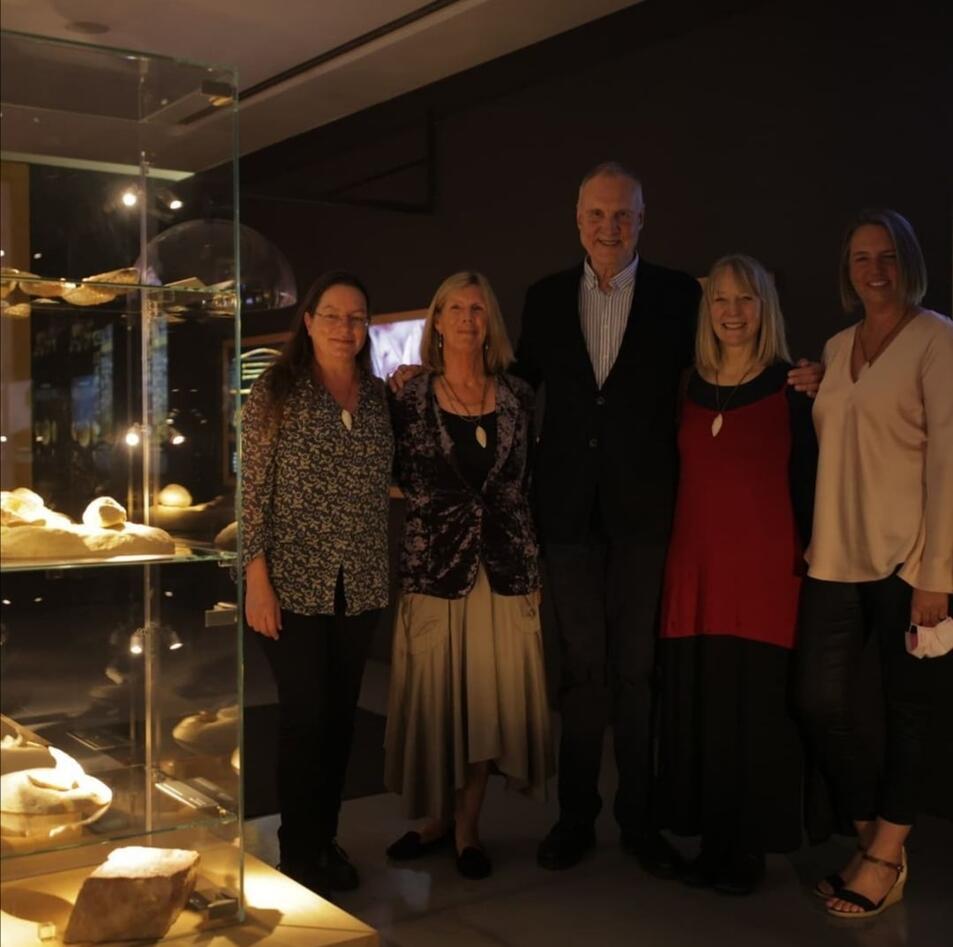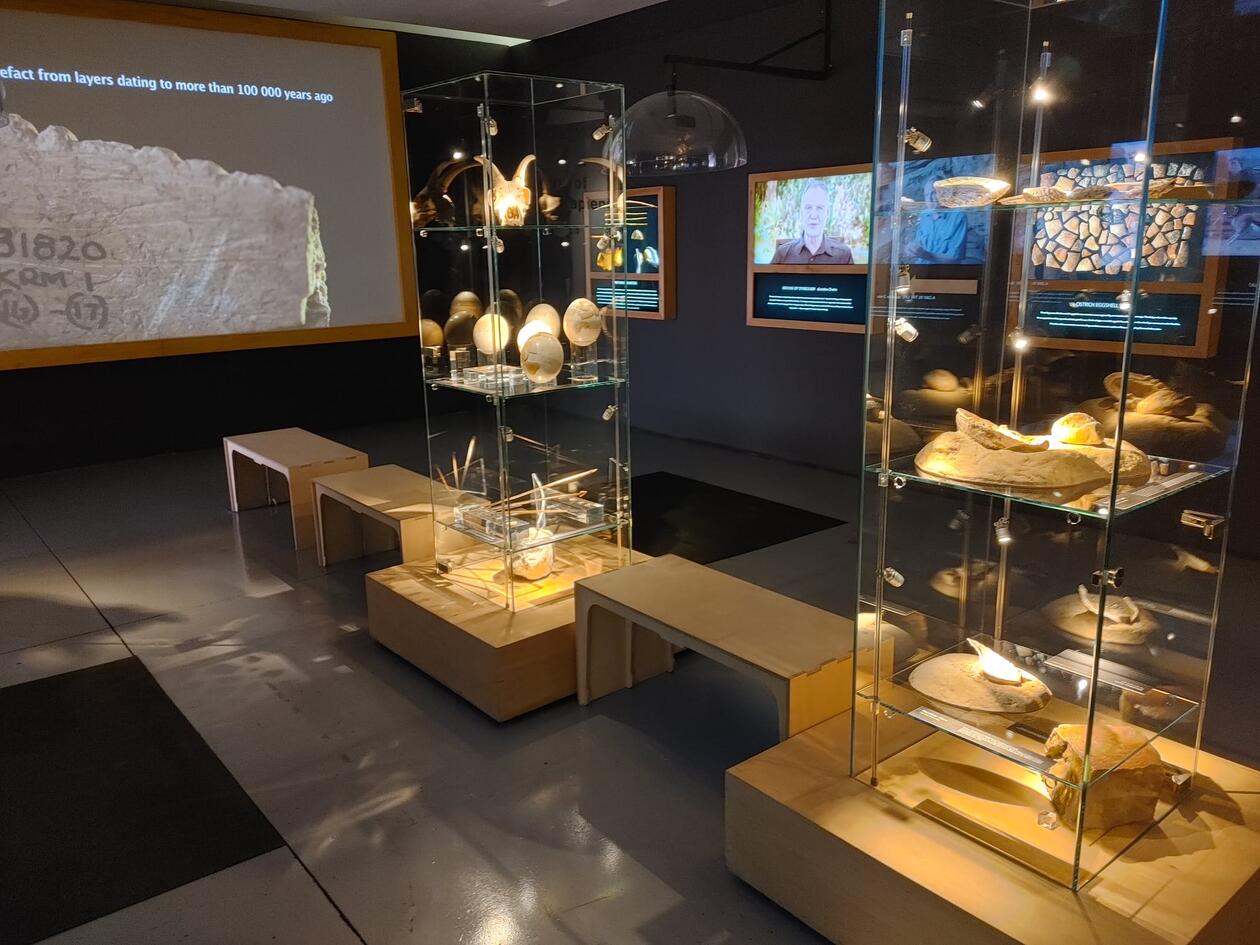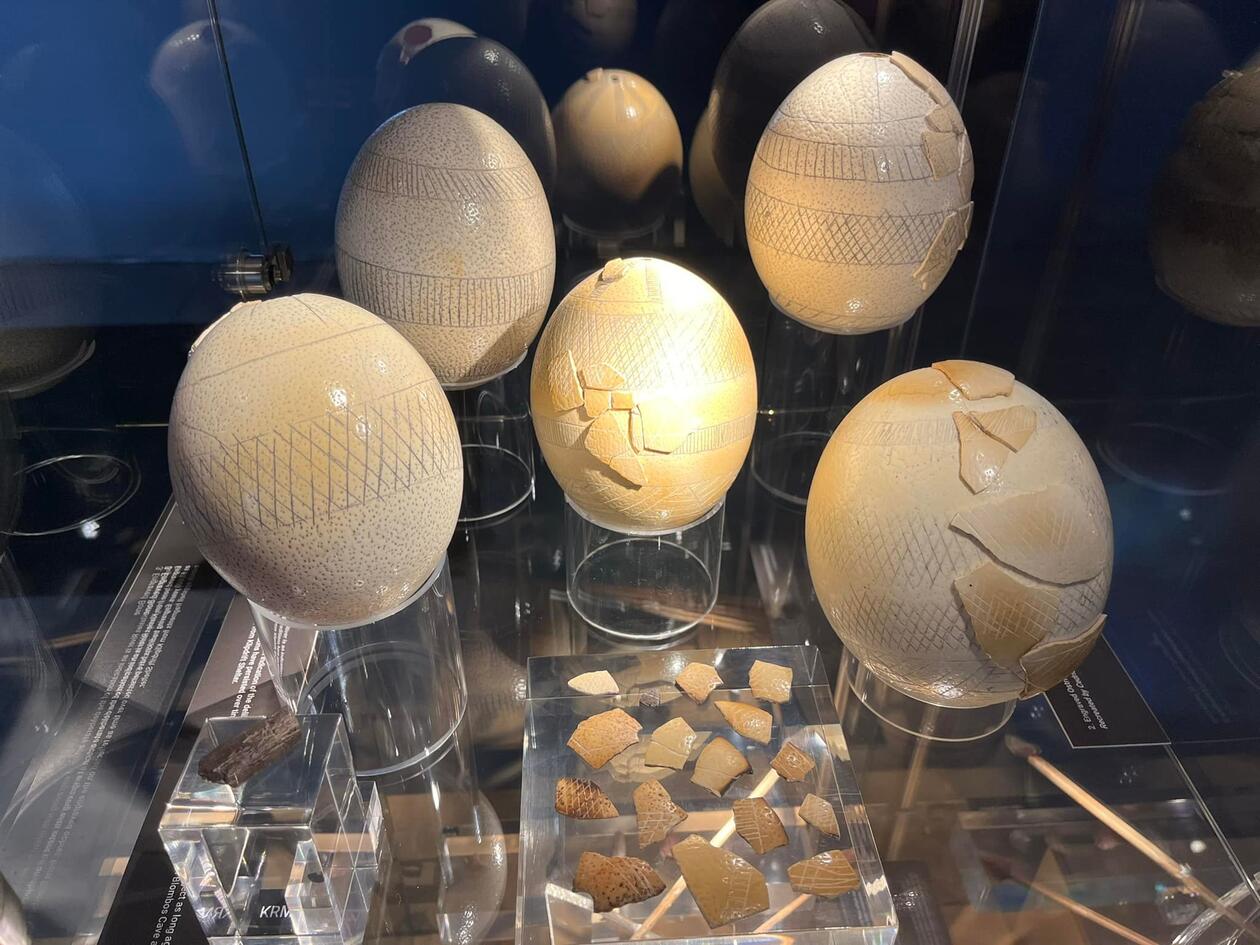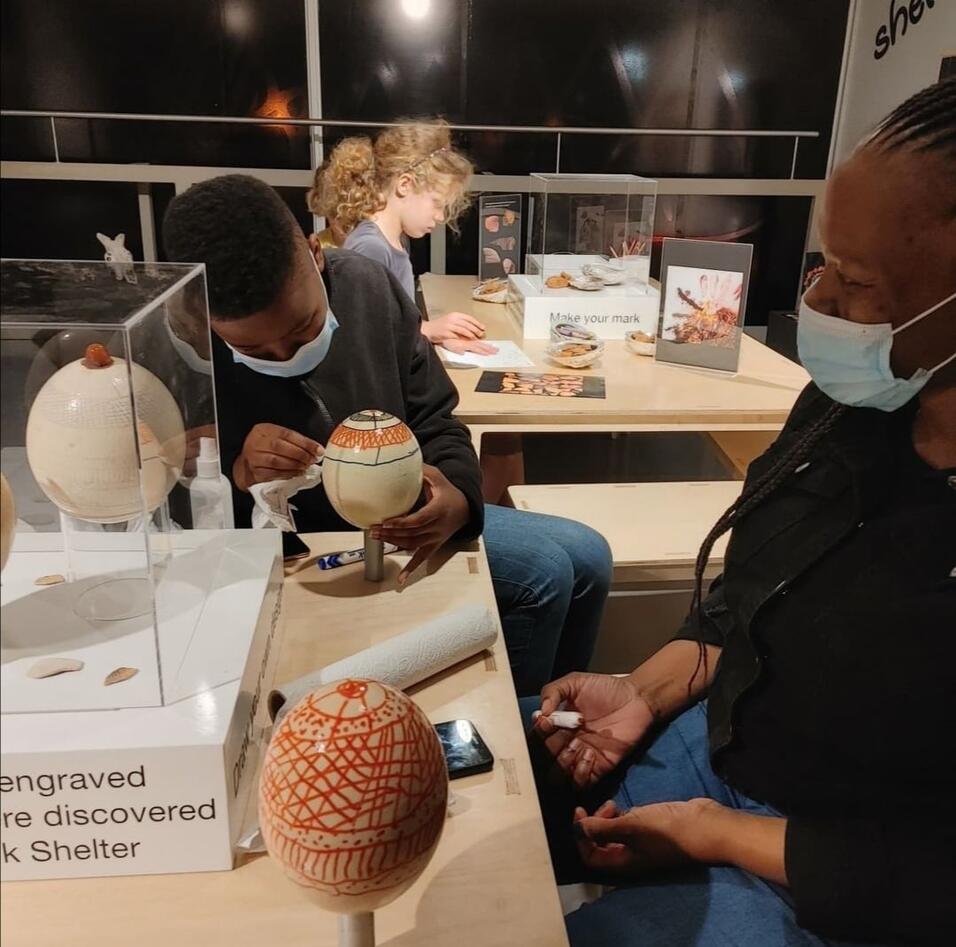Origins of Early Sapiens Behaviour
“We are very proud that SapienCE’s Origins of Early Sapiens Behaviour exhibition has been updated to a new format and found a new home at the Origins Centre at the University of the Witwatersrand in Johannesburg,” Christopher Henshilwood, director of SapienCE says.

Main content
The setup in Johannesburg is the third iteration of the Origins of Early Sapiens Behaviour exhibition, which was first showcased late in 2018 at the Spier Wine Farm in Stellenbosch, near Cape Town. It was subsequently expanded and updated to include finds from the Klasies River site, and moved to the Iziko South Africa Museum in 2019. The exhibition has been on display in Johannesburg since November 2021.
30 years of archelogical research on display
The Origins of Early Sapiens Behaviour exhibition is a showcase of 30 years of archaeological research in the southern Cape, undertaken by Professor Christopher Henshilwood, Dr Karen van Niekerk, Professor Sarah Wurz and their research teams at Blombos Cave, Klipdrift Shelter and Klasies River main site.
The exhibition includes unique archaeological discoveries that have made over the course of some 30 years of excavations at three of our core archaeological sites: Blombos Cave, Klipdrift Shelter and Klasies River, all situated on the southern Cape coast of South Africa. The sites were occupied by early Homo sapiens (humans like us) between 120 000 and 50 000 years ago, a key period in the evolution of modern human behaviour.
Archaeological deposits found in the sites have been meticulously dated using the latest available technology. In addition to viewing archeological discoveries, visitors can also enjoy the extraordinary multimedia presentation comprising 16 unique display panels including six videos by Academy Award winning documentary filmmaker Craig Foster. The exhibition now also features an interactive kids’ area for the South African archaeologists of the future.
We are all one
The "We are all One" message features strongly pointing to the evidence that all Homo sapiens, people like us, have their origins in Africa and promotes an understanding of our common ancestry.
Occupied by early Homo sapiens, the deposits at these sites date from 120 000 – 50 000 years ago – a key period in the evolution of modern human behaviour. Hence the title of the exhibition "Origins of Early Sapiens Behaviour" with the subtitle "Mother Africa – Welcome Home".
The Origins of Early Sapiens Behaviour exhibition was first opened at the Spier Wine Farm in Stellenbosch, near Cape Town. Curated by Craig Foster and Petro Keene it is a multimedia compilation of presentations and excavated artefacts. The exhibition is designed to explore key aspects of archaeological research, linked to the SapienCE/Wits research programme that focuses on early human origins and innovations in southern Africa.
People like us
Sixteen display panels including six videos by the filmmaker Craig Foster illustrates the rich archaeological record of these sites. The "We are all One" message features strongly pointing to the evidence that all Homo sapiens, people like us, have their origins in Africa and promotes an understanding of our common ancestry.
Current genetic evidence and a "people's history" is richly portrayed to educate visitors of all ages about their own past and to encourage a sense of pride in us knowing that we all come from Africa. The daily life of these early Homo sapiens is captured on film, and the artefacts they made and used have been finely replicated and displayed to highlight the fascinating discoveries from these archaeological sites.
Of the many exciting finds displayed perhaps one of the highlights is the ochre-processing toolkit excavated from the 100 000 years old levels at Blombos Cave. This remarkable discovery, found almost perfectly intact, provides the earliest evidence for the manufacture of a red ochre-rich paint that was mixed and stored in the first known containers, abalone shells. The mixture contains ground red ochre, seal fat and ground bone, charcoal and a liquid. It is the same recipe used in ancient Egypt 2000 years ago.
Highly sophisticated
The people living in Blombos Cave made beads out of tiny estuarine shells and strung them in various ways to be worn perhaps as necklaces or pendants. They also engraved abstract designs on more than fourteen pieces of ochre, some 100 000 years old, and made the earliest known drawing that dates to 73 000 years - an abstract design made with an ochre pencil on a stone flake.
These engravings and the drawing are regarded as the first evidence for art. Aesthetically beautiful, bifacially worked stone spearheads, made from specially heated stone and then pressure flaked using a technique thought to have evolved in Europe 20 000 years ago, add to the repertoire of technologically and symbolically advanced material culture that these early humans produced.
The exhibition also showcases finds from Klipdrift Shelter at dated at around 66 000 – 59 000 including engraved eggshell fragments and engraved ostrich egg, water flasks as well as replicas of finely crafted stone tools. Small flakes, essentially tiny pieces of stone, were shaped to form crescents, or half-moons and these were attached to wooden shafts with glue made from plant resins and ochre to make arrows. The wood shafts of the arrows and the bows have not preserved, but the wear patterns on the stone flakes tell us the whole story. This southern African evidence, that is also found at Klasies River, is the oldest for bows and arrows anywhere and ranges from 70 – 55 000 years.



